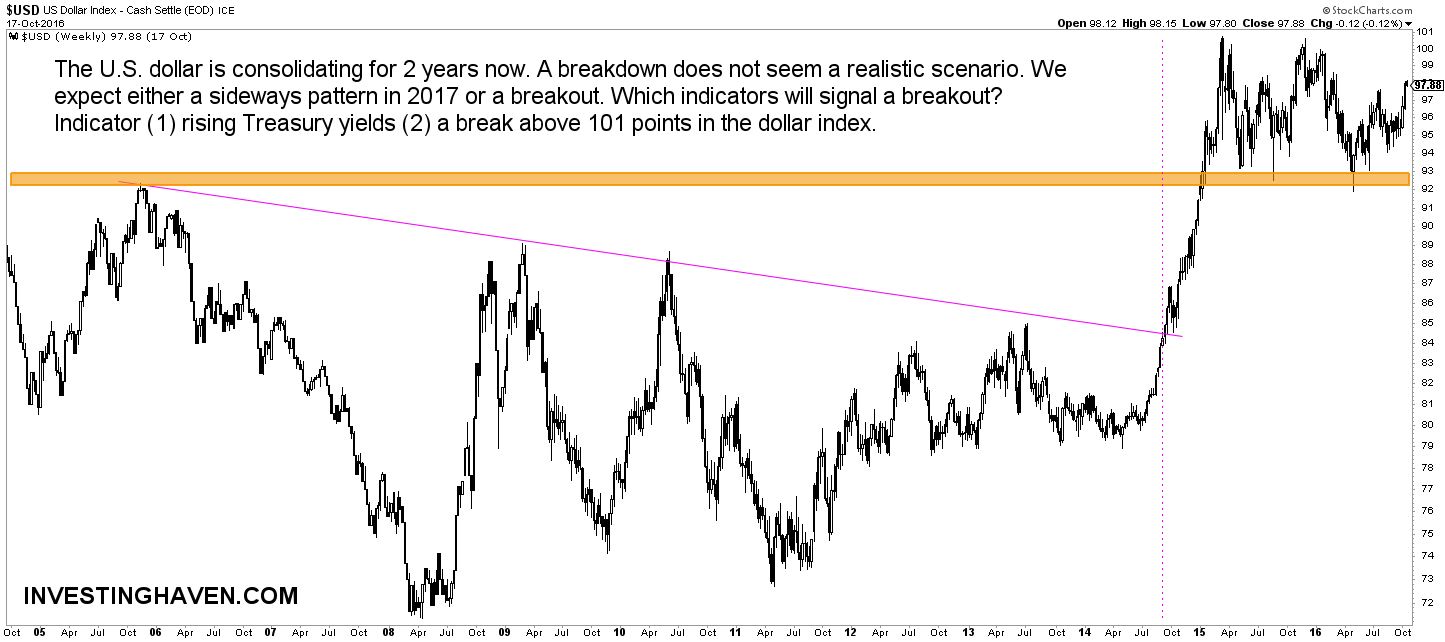Forecasting is not easy, certainly not in the currency market which is subject to monetary interventions by central banks. Given this complexity, we do an attempt to forecast the U.S. dollar in 2017.
Recently, we saw this article with a bearish U.S. dollar forecast which was based on fundamental data and statistics. The article was a clear miss, and it could have been avoided if the dollar chart was thoroughly analyzed.
Similarly, in this piece, the author gave a bearish U.S. dollar forecast (against the Yen). Same comment: big miss, the chart would have told another story.
If we analyze the longer term dollar chart, as seen below, we observe a straightforward pattern: a secular downtrend until 2014, which was broken in September 2014 and which resulted in a rally that has only been seen once in the last 4 decades. Since then, the dollar settled above the 2006 highs at 92 points where it formed secular support.
A chart based U.S. dollar forecast for 2017
Forecasting what the dollar will do in 2017 is obviously a function of the longer term chart pattern. Like any asset, the dollar can go up, down or sideways. By exclusion, we would say it will most likely go up or sideways, because a breakdown seems extremely unlikely given the strong support on the chart which was formed after a multi-decade breakout. Though below chart makes our point, it becomes even more clear on the secular dollar chart which shows a secular breakout … that suggests the dollar will not trend lower in the years to come.
A sideways pattern in 2017 is certainly possible, and central banks will probably desire limited volatility in currency land. We believe a continuation of the consolidation area between 92.50 and 101 points has a 50% probability.
The other possibility is that the U.S. dollar will trend higher in 2017. Which indicator are we monitoring which spells a trend higher? It is strength in Treasury yields combined with a break above 101 points in the U.S. dollar index. In other words, intermarket dynamics could push the dollar higher driven by rising yields, and that really is the primary market trend which we forecast in 2017.



